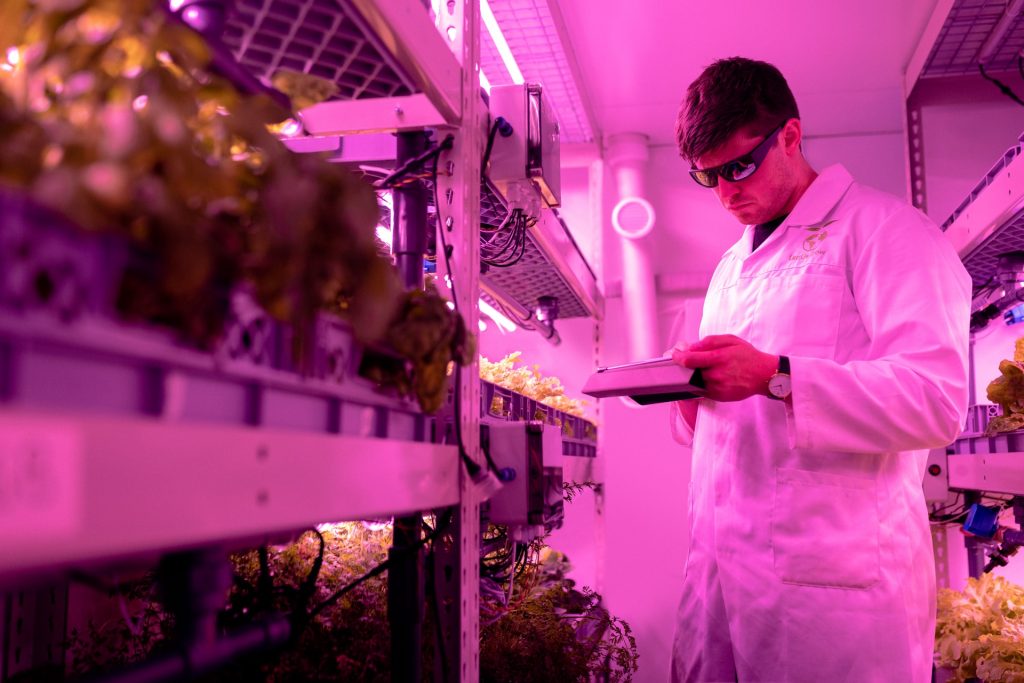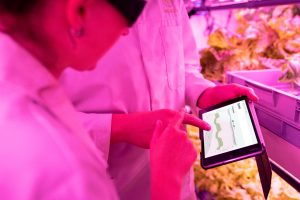7 Amazing Green Technologies Improving Agricultural Practices
By: Emily Newton
The green revolution has extended its influence on the agricultural sector. Eco-consumers hold farmers accountable for their environmental impacts by influencing a sustainable market. In turn, farmers are catering to eco-consumers to gain a leg up on competitors.
Professionals in this industry can increase production sustainability by adopting advanced tech. Environmental engineers are developing sustainable agricultural technologies to help regions meet emission-reduction goals. Green technology in agriculture could effectively decarbonize the farming industry.
The Demand for Sustainable Agriculture Technologies
Countries are implementing agricultural sustainability regulations to monitor pollution and protect the environment. Practices during production contribute to soil erosion, water pollution, eutrophication, deforestation and natural-resource exploitation. These can be some of the most significant contributors to climate change in many countries.
Some farmers use outdated equipment and practices like monocropping, which depletes soil nutrients over time. Clear-cutting forests can also adversely affect the environment.
Some farmers destroy forests to develop agricultural land. One matured tree can take in and filter pounds of carbon emissions, so losing many of them can be detrimental to the environment. Deforestation causes atmospheric degradation and contributes to climate change.
Farming equipment also contributes to atmospheric degradation and creates greenhouse gas emissions. To change this, farmers can invest in sustainable agricultural technologies to shrink their carbon footprints and cater to eco-consumers.
1. Vertical Farming
Sustainable farmers are moving their practices inside to minimize surface-level and atmospheric pollution. Controlled growing environments are eco-friendly because they conserve natural spaces. Individuals can prevent deforestation, soil erosion and resource depletion using vertical farming.
Agricultural professionals are stacking crops to optimize space, light and water. Engineers design vertical farming facilities with efficient appliances to minimize emissions. They often use LED grow lights, which maximize energy use.
LED lights use about 75% less electricity than incandescent bulbs. They also last about 25 times longer and reduce municipal solid waste over time. Some vertical farmers use aquaponic technologies to target water pollution and soil erosion.
Vertical aquaponic systems rely on natural marine ecosystem features. Farmers integrate fish into their agricultural practices to produce soil nutrients and oxygenate water supplies. Specific aquaponic pumps then distribute oxygenated water throughout vertical farms.
2. Smart Sprinklers
Farmers can also use intelligent sprinkler systems to reduce resource exploitation. Autonomous irrigation technologies rely on the Internet of Things to access real-time weather predictions. Smart sprinklers use ground-level sensors to collect and distribute field data.
The IoT system creates a communication stream between sensors, computers and agricultural professionals. Smart sprinklers optimize irrigation and reduce over and under-watering by measuring soil saturation. Farmers can also adopt advanced rural communication technologies to monitor and report field conditions.
Rural mobile communication technologies increase farmers’ productivity levels. They can collect valuable business insights by analyzing precipitation and moisture data. Communication services may improve crop production rates and minimize waste.
3. Rainwater-harvesting Systems
Sustainable farmers can optimize their water supplies using rainwater harvesting systems. This reclamation system decreases stormwater runoff and farmers’ reliance on freshwater. Many agricultural professionals combat adverse climate change effects with pesticides and synthetic fertilizers.
These additives contain high levels of nitrogen and phosphorus, which cause algal blooms. Algae deplete marine oxygen levels over time and degrade natural habitats, forcing aquatic species into migration.
Rainwater harvesting systems prevent stormwater runoff by collecting excess rainwater and snowmelt. The systems store runoff in barrels and filter it through advanced purification devices. Farmers can use purified stormwater for irrigation.
Repurposing stormwater can conserve the global freshwater supply. About 0.5% of Earth’s water is accessible to humanity. Protecting the scarce supply may increase international sustainability levels.
4. Farming Drones
Drones are another form of green technology supporting sustainable agriculture. Farmers can use drones throughout their fields to monitor crop development and collect valuable data. Drones help agricultural professionals monitor areas remotely, which minimizes transportation emissions. The technology runs on electricity and produces zero emissions while in use.
Drones help farmers optimize their field time and decrease crop loss. Farmers can increase global environmental sustainability by minimizing crop and food waste.
Researchers found nearly 30% of food waste occurs during agricultural production and harvesting. Agricultural waste contributes to freshwater exploitation and atmospheric degradation. Professionals can use drones to monitor crop development and prevent waste.
5. Electric Field Equipment
Environmental engineers are developing electric field equipment to reduce the global agricultural carbon footprint. Most field equipment relies on diesel, producing greenhouse gas emissions during combustion. Farmers can minimize atmospheric degradation by investing in electric alternatives.
Eco-conscious farmers are teaming up to expand rural electrification can produce a clean agricultural economy. They are swapping their diesel-powered equipment with electric alternatives to support the sustainable transition. Electric tractors have zero tailpipe emissions and increase cost-efficiency.
Farmers can also power their electric field equipment with renewable energy to reduce greenhouse gas production. Electric agricultural equipment may improve crop qualities by minimizing surface-level pollution. Farmers can produce healthier, organic crops using sustainable agriculture technologies.
6. Biotechnology
Another green technology in agriculture is biotechnology. Agricultural biotech alters organism components to improve crop development. Farmers use this eco-friendly advancement to yield abundant and cost-effective crops.
Professionals are engineering pest and disease-resistant plants to minimize food waste. Designing crops to reduce environmental disruptions also decreases pesticide usage. However, some consumers are resistant to purchasing genetically-modified or engineered foods.
Consumers are sometimes unaware of the ecological benefits of biotechnology. Engineers created advanced modification practices to target surface-level and atmospheric pollution, facilitating phytoremediation production.
These plants may remove and store pollutants from the soil to minimize ecosystem degradation. Bioengineered plants also prevent soil erosion and nutrient depletion.
7. GPS and Telemetry Systems
Global positioning systems and telemetry devices are the final sustainable farming technology supporting green agriculture. Farmers are using GPS technology to program their autonomous field machines. They may also use the systems to find more energy-efficient routes around their fields.
Sustainable farmers can additionally use telemetry systems to transmit data from agricultural equipment to remote monitoring systems. The technology relies on sensors to gather temperature and precipitation information. It converts the data into electrical voltages and transmits it through a wireless medium.
Telemetry helps farmers integrate bio-implantable systems into their agricultural designs. The technology also increases field monitoring and decreases food waste.
Integrating Green Technologies into Farming
Green farmers can integrate sustainable agricultural technologies into their practices by creating a budget for new systems. Each piece of sustainable equipment has a high return on farmers’ investments. The technologies lower their reliance on energy, additives, nutrients and food waste, which increases individuals’ profits.
Emily Newton is a journalist with over four years of covering the environmental sector. As Editor-in-Chief of Revolutionized, she also covers how technology is changing our world.






